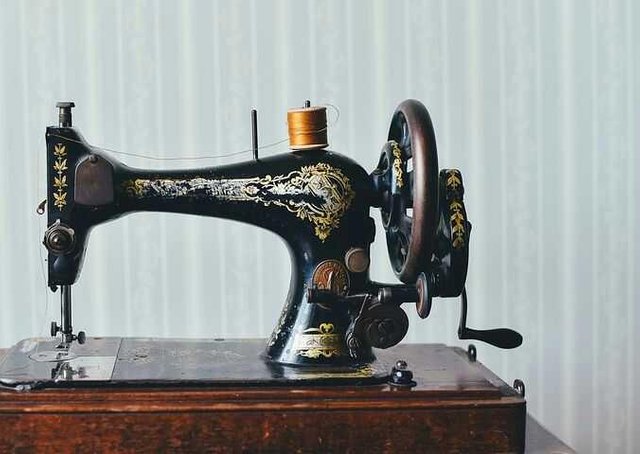
In the 1980s was mostly the first machine to enter the home also known as the miracle of its age. Sewing was a complicated action and to the people of that time, it almost seem inconceivable that a machine could do such. We started with the needle and thread that requires both hands and a lot of concentration.
The sewing machine is like magic cause they work effortlessly with perfect stitches without hardly ever tangling up. To make a machine directly imitated hand sewing would be very difficult. The real secrete to machine sewing is being to find a completely different sort of stitch that's more suitable. The first clue came from an embroidery decoration popular in the 18th century using a hook needle to form a sort of chain stitch,
.jpg)
image source
the needle never needs to go right through the fabric so it can be firmly fixed to part of the machine at the top.
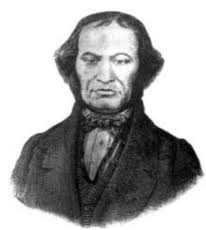
image source
In 1829 Barthélemy Thimonnier a French inventor built the first sewing machine. The same year he opened the first machine based clothing manufacturing company in the world. The factory was then burnt down by angry tailors fearing the invention would rob them of their livelihood, it ruined him and unfortunately he died penniless.
Now get this the first ever sewing machine was actually invented by Thomas Saint in 1790. So basically Thimonnier's machine was not the first. Now the chain stitch has a disadvantage it is very easily pulled apart then came the lock stitch
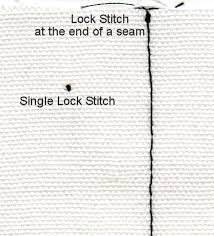
image source
The secrete of the machine was rarely the brilliant shape of the needle itself. The first lock machine was built in America by an inventor called Walter Hunt about 1833 and issued June 27, 1854. Every lock stitch has this four movement;
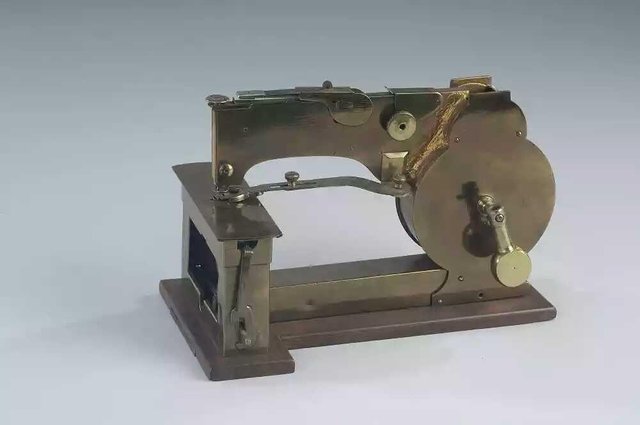
- Pushing through the needle.
- Passing the look round the bobbin.
- Pulling the stitch tight.
- Moving the material forward.
The movement are all connected to the motor by series of ingenious mechanical linkages. The machines were beautifully decorated with flower like designed and trade mark logos on them, Well possibly because the sewing machine was the first machine to enter the home to the time were the other machines were industrial. The designes were mostly aimed at making them look more domesticated.
At first they had distinctive characteristics but by the 20th century they looked more alike due to the dominance of one particular manufacturer [Singer]. The company was founded by Isaac Merritt Singer an American inventor, actor and businessman. He made important improvement in the design of the sewing machine. In the earliest days of the sewing machine attempts were made to find a better way of powering it than just turning a handle. In America the treadle caught on immediately cause it was a great advantage having both hands free to control the cloth, but in Britain it was regarded with suspicion and said to be unlady like cause it worked pretty hard on the ankles. Attempted methods were;
- Water wheels
- Giant clock work motors
- Steem
They were all inconvenient. The first electric machine appeared in the 1920s. It was first a separate nut bolted on then gradually became integrated in the body of the machine. The motor itself is connected by a drive belt which was either rubber or leather but on modern machines it has a synthetic tooth belt which doesn't slip.
There are limitations to the movement you can get out of simple cranks and levers, some use cams which provide a wider movement. Most modern sewing machines can do a wide variety of fancy stitches, they look a lot more complicated but there is only one basic extra movement and that is moving the needle from side to side and by combining side waist needle movement with variable cloth feed movement all sorts of fancy stitches become possible.
Each stitch has a different cam switching the stitches, the cam also moves to a different rhythm. The stepper: a brushless DC electric motor that divides a full rotation into a number of equal steps while sewing it the stepper moves the needle in small steps which is fixed to a cog. Today "SINGER" has lost it's market dominance to German swiss manufacturer's who now produce the most advance machines. With the old mechanical machines which use to last anything up to 100 year's, the llack of obsolescence has quite a problem for the manufacturer's. But anyway he golden age of the domestic sewing machine is perhaps already past. When it first appeared there were no shops anywhere , you either make your own or get a tailor to do it. Generations ago most families made some of their own clothes. The sewing machines besides speeding up home sewing also made the off the peg clothing industry economically successful, today the home sewing machine has lost it's central importance but rather
a minority hobby with enhanced sewing machines that are quiet, faster and more efficient, nowadays lots of people just buy clothes from boutiques.
Dear Reader,
Thank you so much for taking your time to read my post.
References
1.Virginia Churchill Bath, Needlework in America, Viking Press, 1979 ISBN 0-670-50575-7
2.S.F.A. Caulfield and B.C. Saward, The Dictionary of Needlework, 1885.
3.http://americanhistory.si.edu/collections/search/object/nmah_1070410
4.Brandon, Ruth, Singer and the Sewing Machine: A Capitalist Romance, Kodansha International, New York, 1977.
5.https://en.m.wikipedia.org/wiki/Isaac_Singer
6.Liptak, Bela G. (2005). Instrument Engineers' Handbook: Process Control and Optimization. CRC Press. p. 2464. ISBN 978-0-8493-1081-2.
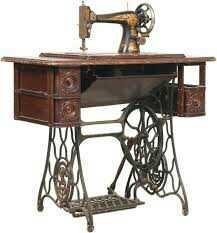
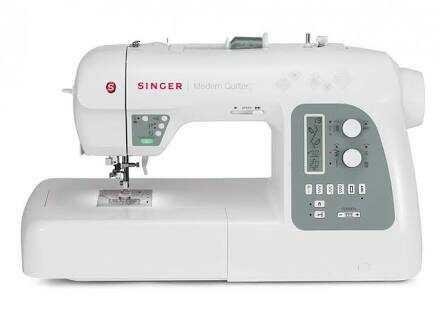
Great work and very informative, keep the fire burning. Although what really caught my attention is your heading, it a mystery indeed.
Downvoting a post can decrease pending rewards and make it less visible. Common reasons:
Submit
Thanks so much bro
Downvoting a post can decrease pending rewards and make it less visible. Common reasons:
Submit
I felt a shame while reading your post , am a tailor and I don't know the history of the sewing machine . Thanks to you I now better, I learnt a whole lots.
Awesome post
Downvoting a post can decrease pending rewards and make it less visible. Common reasons:
Submit
Don't be ok its all good am happy I enlightened you, thanks for reading my post.
Downvoting a post can decrease pending rewards and make it less visible. Common reasons:
Submit
Wow
Kudos👏👏👏
Downvoting a post can decrease pending rewards and make it less visible. Common reasons:
Submit
Thanks alot
Downvoting a post can decrease pending rewards and make it less visible. Common reasons:
Submit
Dont even think my boss knowa this. Thanks.
Downvoting a post can decrease pending rewards and make it less visible. Common reasons:
Submit
Congratulations @darrenblinks! You have completed some achievement on Steemit and have been rewarded with new badge(s) :
Click on the badge to view your Board of Honor.
If you no longer want to receive notifications, reply to this comment with the word
STOPDo not miss the last post from @steemitboard!
Participate in the SteemitBoard World Cup Contest!
Collect World Cup badges and win free SBD
Support the Gold Sponsors of the contest: @good-karma and @lukestokes
Downvoting a post can decrease pending rewards and make it less visible. Common reasons:
Submit
Congratulations @darrenblinks! You have completed the following achievement on Steemit and have been rewarded with new badge(s) :
Click on the badge to view your Board of Honor.
If you no longer want to receive notifications, reply to this comment with the word
STOPDo not miss the last post from @steemitboard:
SteemitBoard World Cup Contest - Let's go for the Quarter-Finals
Participate in the SteemitBoard World Cup Contest!
Collect World Cup badges and win free SBD
Support the Gold Sponsors of the contest: @good-karma and @lukestokes
Downvoting a post can decrease pending rewards and make it less visible. Common reasons:
Submit